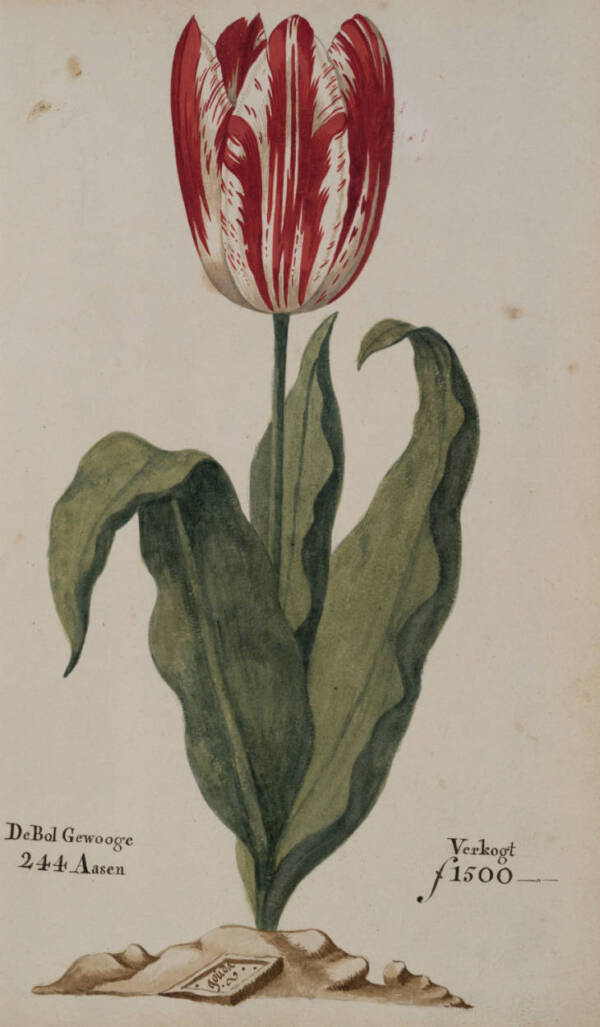The Tulip bubble, it isn’t what you think it is
Rubaiya Rahim (22201109)
Finance
Today you can buy several tulips for a couple of dollars . In 1637 you could buy every house on your street for a couple of tulips. The year is 1637 right in the middle of the Dutch golden age. This is the era of names such as Rembrandt Christian Huygens and Johannes Vermeer and even though it was in a golden age the Dutch Republic was a new country founded only half a century ago when it revolted against the Spanish Empire and started the 80 years war. It’s the place where the first financial bubble burst. It is called the Tulip mania. We can relate this mania with the modern day Bitcoin. This is an economic bubble and like all bubbles they eventually burst. Tulips originally came from Persia and traveled via the Ottoman trade to Western Europe in the 16th century . Tulips come in a variety of colors and they rapidly became prized above all other flowers. The Dutch Republic saw the rise of a new middle class and these merchants and traders were willing to pay large sums of money for the newest, the latest, the most spectacularly colored Tulips .Each year new varieties were cultivated. By the 1620s a beautiful new flower had merged the Semper Augustus. This was owned by one man. And he was crafty. He created a monopoly meaning he was the only one who was able to sell the Semper Augustus. And many merchants filed complaint about this. And records of these complaints can still be found to this day. And it is through these records that we know just how much Tulips were worth back in the day. As a result the price went up. In 1623 the price of a single Tulip bulb was worth a thousand guilders by the end of 1625 that price had risen to 3000 guilders. In the 1630s tulip trade started to change and one change led to another until eventually the whole thing collapsed.
There was a large variety of bulbs but the problem was they couldn’t sell as many or as often as they wanted to. Tulips don’t grow very fast so you can’t harvest every autumn like most other crops. In fact it can take several years before a Tulip fully bloomed. So until it bloomed you wouldn’t know what your Tulip would look like. So the first change happened. A new type of futures contract happened where you would sign a contract for a Tulip bulb but you don’t take the possession of the bulb just yet because wait until it fully blooms so you can sell your contract. It is to reduce the risk. And contracts started piling up. This marked the second change. Before tulip trading was highly seasonal. But now the trading was there. And so with people who knew almost nothing about tulips buying large amount of tulips while at the same time being told that the price can only go up. Prices grew faster and faster, they began to skyrocket by the end of 1636. A few months before the collapse happened. Within 3 months individual bulbs were sold dozens of times. The prices cheap bulbs also increased. By this time a single bulb was able to buy a large house. This was the height of Tulip Mania. More and more people joined the tulip trade hoping to buy a couple of bulbs now and sell them for a profit later but the price only increased because the people were expecting it to increase. For the case of this bubble the actual value of the product is a lot lower than the amount of money for which it is traded. This is what makes a bubble a bubble and this was the first bubble so nobody knew what was to come. The very idea of a bubble didn’t exist yet. To most people this was like a business as usual. But not all. Some people thought the price was too high and they should sell the tulips before the price dropped. But the end still came sudden and unexpected.

In the evening of February 5th,1637. Soon the trading is about to begin. People start to trade. The offer decreased as the bulbs are not mature yet. The men start getting nervous as the price dropped so they decide to sell all tulips now before they dropped more. So eventually the price goes down as there are more tulips to be sold. To compete with the other traders they now have to lower their price. Meaning more people to sell, meaning more lower prices. This cycle continued throughout the evening and the prices had fallen dramatically. 95% in a single night. And it spread throughout the cities .So the prices in other cities crashed as well. Within 4 days the bubble had burst across the Dutch Republic. People lost a lot of money. A financial crisis isn’t created by evil people sitting in a room plotting doom but rather it’s a process of one risky investment after another and a series of seemingly good decisions that benefited the individual but led to the collapse of the trade for the whole collective.



Comments
Post a Comment